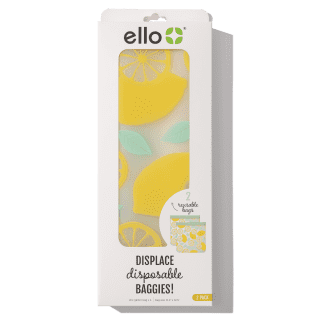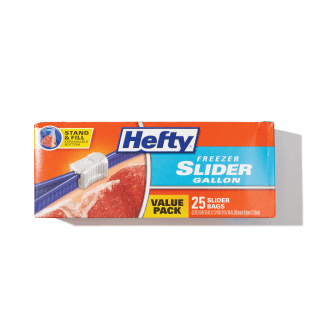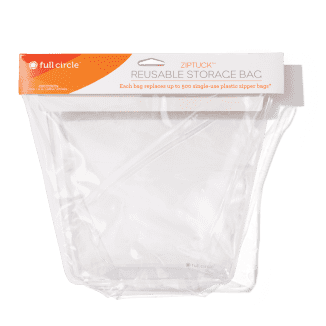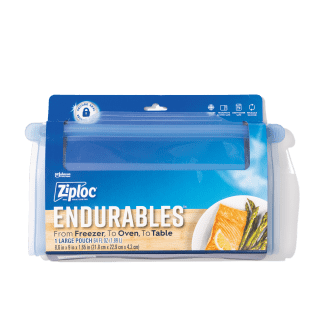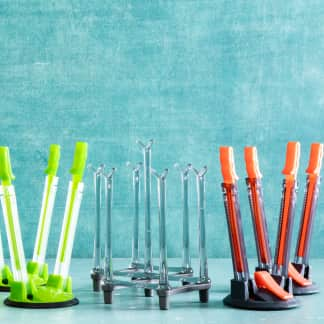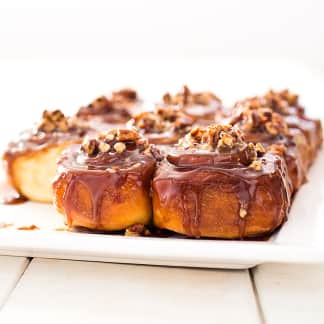We tested top-selling single-use and reusable food storage bags from major brands such as Ziploc, Glad, and Stasher. We focused on “freezer” bags, which are more protective, and opted for the 1-gallon size where possible. In single-use plastic bags, our co-winners impressed us with easy-sealing, secure, leakproof closures; generous capacities; and durable construction. We learned that the right bag made a big difference when it came to keeping food in great condition, especially in the freezer. Choose from Ziploc Freezer Bags Gallon, which are available in supermarkets, or LK 10” x 12” Gallon Heavy Weight Seal Top Freezer Bags (4 mil), which are designed for food service and available in bulk online. In reusable bags, we recommend (re)zip Gallon Bag 4-Pack and Ello Reusable Gallon Storage Bags, set of 2. Both are made from flexible, durable polyethylene vinyl acetate (PEVA); seal easily; and closely resemble the shape and functionality of gallon-size single-use plastic bags.

Storing food is easy with a sturdy gallon-size bag, whether it’s single-use plastic or reusable. In the test kitchen, we love gallon-size bags for everything from storing fresh herbs, greens, and vegetables to marinating meats and keeping leftovers. We use them when freezing raw and prepared foods, including cookie and pizza dough, soups and sauces, beans, breads, and meats. We’ve even snipped off the corner of a plastic bag to make a piping bag.
Both single-use and reusable bags have pluses and minuses. Single-use plastic bags are inexpensive, widely available, and convenient, particularly when you can throw them away after storing messy foods or raw meat. Reusable bags cost more upfront, but they can save you money over time. To minimize the environmental impact and potential health issues surrounding single-use plastics, we’ve long recommended reusable bags, though most were previously available only in snack and sandwich sizes. Recently, gallon-size bags have arrived on the market.
Recycling Tip
Did you know? You can recycle plastic bags, usually at your supermarket. Check out this link for locations near you.
We tested a lineup of large single-use and reusable bags, focusing on “freezer” bags whenever possible, since they are constructed to be thicker, sturdier, and more protective than “storage” bags. Likewise, we opted for gallon-size bags whenever possible, since we like their versatility. We compared the bags’ capacity, ease of use, protection, and durability.
What to Look For
- Flat Shape: Unless you’re storing extra-bulky vegetables in the refrigerator, flat bags are more versatile, and they let you press out air around food going into the freezer to keep it in better condition. In our freezer tests, flat bags kept food virtually frost-free; looser bags failed. Their compact shape leaves more room in the refrigerator or freezer. Gussets that expand the bottom of some bags rarely proved helpful.

- Wide, Rollable Opening: Bags with openings at least 10 inches across were easier to fill. Wider openings mean you don’t have to wriggle in big items or risk squashing baked goods. Being able to roll back the collar is helpful when you need to prop open the bag for liquids. It also allows you to keep the seal clean and dry while you fill the bag.

- Secure, Easy-to-Use Seal: Struggling to line up seal tracks to close a bag is frustrating. It may also leave bags only partially sealed. Our favorites of both single-use and reusable bags had just enough stiffness at the collar to help keep seal tracks aligned and were designed so that the two halves clicked right into place with a satisfying snap.
- Long, Grippy Top Edge: We appreciated when the top of the bag extended well past the zipper track, with ribs or texture to grab so that we could open the bag without scrabbling.


We appreciated bags that extended a bit of extra material above the seam, which made it easier to open sealed bags without having to scrabble for a grip. Some were even textured to help.
- Tough, Leakproof Construction: Bags that keep moisture out and liquids in are neater to handle, and they protect food better in both the refrigerator and freezer. Strong zipper-lock seals that closed completely, as well as tough side seams that kept bags intact during abuse tests, proved bags could stand up to rough handling and accidents. In disposable plastic bags, our top-ranked models felt thicker—and weighed more—than lower-ranked models, and they didn’t burst when dropped.
- Easy to Clean: While you can wash and reuse a single-use plastic bag a few times, easy cleaning is critical in reusable bags. Seek out those with simple seals, flat (rather than complex or folded) shapes, and rounded corners that are easier to scrub. Dishwasher-safe bags are a plus.
What to Avoid
- Thick, Chunky Seal: While this mostly applies to reusable bags, it also holds true for bulkier seals on single-use plastic bags. Thick seals are slow and awkward, and they don’t provide sensory feedback that they’re fully closed. They also make bag openings narrower, and they can’t be rolled back to prop open the bag for filling.
- Leaky, Weak Closure: A bag that bursts open or rips when it’s full has limited versatility at best, and at worst it makes a mess. Some silicone seals were the worst offenders, popping open whenever the bags’ contents pushed against them. A slider closure on one single-use bag leaked when the bag held liquid, let water in when the bag was submerged, and allowed frost to build up inside during freezer testing.

- Gusset or Wedge Shape: Bags with gussets or wedge shapes proved less versatile than flat bags. They let food roll around, flop over, or break up. It was hard to remove excess air, leading to frost accumulation in the freezer. In reusable bags, folded surfaces also took longer to scrub clean and let air dry.
Pro Tip
To help seals on reusable bags close more easily and last longer, occasionally wipe a thin coat of cooking oil along the inside tracks. Because you wash the bags after each use, the oil won’t get sticky.
Other Considerations
- Colorful Reusable Bags Hide Stains: If you don’t want to look at discolored reusable bags, don’t buy clear or white bags, which stain easily from foods such as tomato and turmeric. Colored and patterned bags make it slightly harder to view contents but help hide stains. Some brands suggested laying bags in the sun for hours to lighten stains; it did help, but we can’t see ourselves arranging bags for sunbathing on a regular basis. (See “What’s the Best Way to Clean (and Deodorize) a Reusable Bag?”)
- Calculate the Quantity of Reusable Bags You’ll Need: When you’re used to popping open a box holding more than a dozen plastic bags, it can come as a surprise if you’ve bought just one or two reusable bags and thought you were all set. Remember that you’ll be storing multiple foods, sometimes in the freezer for weeks at a time. Buy more than one bag to start with, and figure on adding more to your collection as you learn how many you need. At $5.00 to $35.00 per bag, reusables can be an investment.
The Tests
- Pack 4 pounds of raw carrots, seal, and shake upside down 10 times
- Pack 7 ears of corn, seal, and shake upside down 10 times
- Fill to capacity with water, seal, and shake upside down 10 times
- Fill to capacity with water and weigh water
- Weigh color-indicating moisture-absorbing desiccant packs and seal inside each bag, submerge bags in water for 6 days, remove and weigh packs, and note any color changes
- Freeze 4 pork chops, 4 hamburger patties, 12 cookie dough balls, 4 slices of wheat bread, and chicken noodle soup for a month
- Fill bags with tomato sauce, seal, and push from countertop onto floor
- Fill reusable bags with vegetable oil, turmeric, cumin, and fish sauce; let sit over a weekend; and then empty and wash, checking for stains and odors
- Wash reusable bags at least 10 times, by hand or dishwasher as indicated by care instructions
- Open and reseal reusable bags 100 times
How We Rated
- Leak Resistance: How leakproof and air-tight the bags are
- Ease of Use: How easy the bags are to fill, seal, and handle
- Durability: How strong the seals, seams, and bodies of the bags are
- Freezer Protection: How well the bags are able to protect food in the freezer (if they work well in the harsh freezer, they’ll also perform well in the refrigerator)





